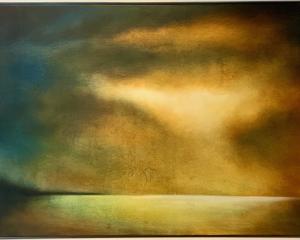
Eastern Southland Gallery programmes officer Marcella Geddes said art-goers from across the South came for the opening of "LINEAGE: 130 Years of Bosshard Jewellery" on Saturday.
The out-of-town patrons, jewellers and collectors stayed the night in Gore so they could hear Swiss-born Bosshard’s floor talk the next day, she said.
To an audience of about 75, Bosshard detailed his goldsmithing lineage and career, in conversation with Te Papa decorative art and design curator Justine Olsen.
He first spoke about his grandfather, Jakob Bosshard, who opened his first jeweller’s shop in Uster, Switzerland in 1895.
Bosshard’s father, Heinrich, took over the business in 1930 and Bosshard, born in 1939, carried on the family tradition by training as a goldsmith.
However, he escaped tradition by moving to New Zealand in 1961 and establishing a minimalist practice.
He and Dunedin jeweller and sculptor Stephen Mulqueen opened workshop and gallery Fluxus in 1983, dedicated to the subversion of their shared craft.
Ms Olsen took the jeweller around the gallery’s main room, working through the timeline of three generations of work.
The exhibition features drawings, watercolours and metal pieces by the family that are up to 130 years old.
The collection shows Bosshard’s preserving of tradition, through his forebears’ curly European archive, and his eschewing of that tradition with his deconstructed pieces.
Living in New Zealand in relative rural isolation, he was able to develop his own aesthetic that was not influenced by trends or "unrealistic ambitions", Bosshard said.
"Now, I can confidently say that all the work I have made is my own and is of New Zealand," he said.
He explained some of his processes, which created the pared-back unfussy style of jewellery for which he was known.
His silver bangles, which several audience members were wearing, were made using square rods of the precious metal, looped to fit a wrist.
In some of the bracelets, he kept the material’s square form, and in parts of others he manipulated the shape, but only slightly.
They completely came out of the material, he said.
He was grateful for the circumstances and heritage that made his long career possible.
"I am grateful to my grandfather, my parents and my upbringing which enabled me to follow on in their trade and also forge my own path."











